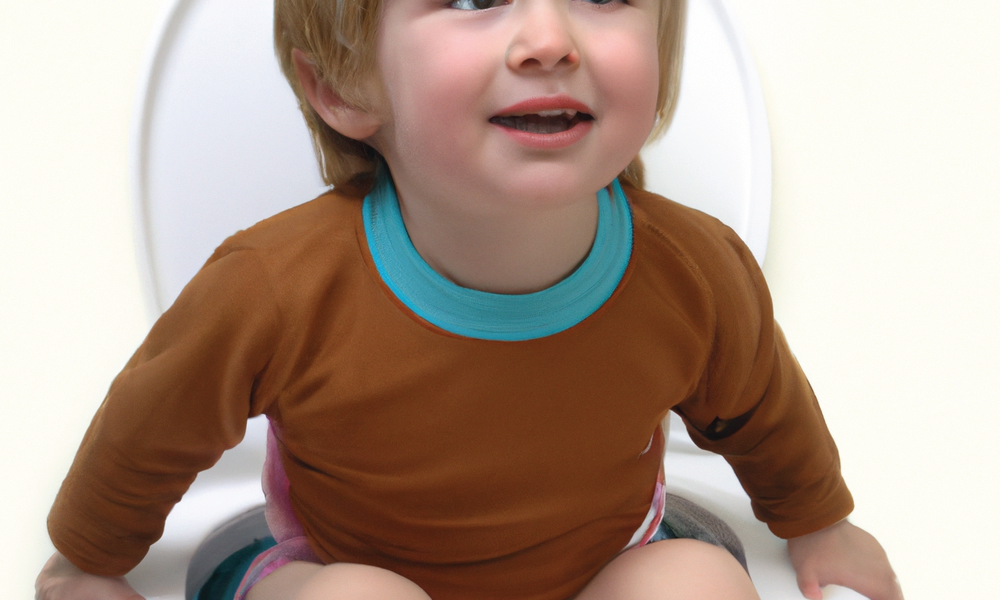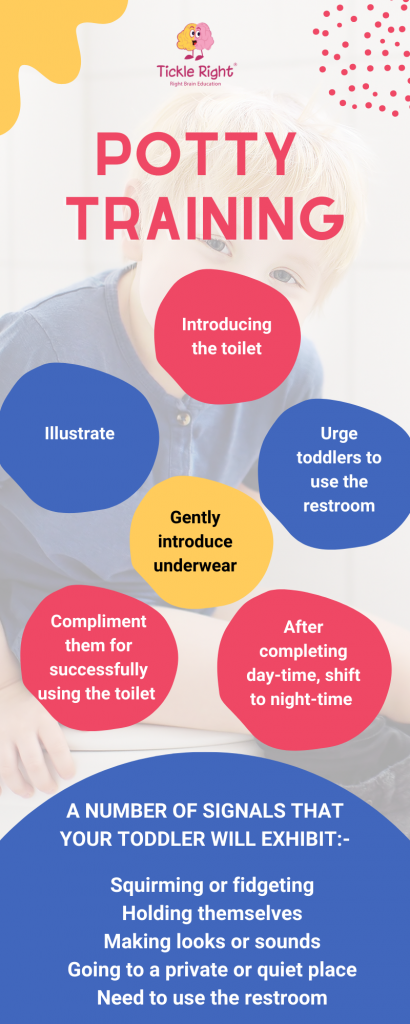As a parent, you’re constantly thinking about your baby’s well-being, and their brain development is at the top of that list. The first few years of life are a critical period for cognitive growth, with trillions of neural connections forming. What your baby eats during this time directly impacts their brain’s structure and function. This is why understanding which...
How to make potty training fun
A critical turning point in a child’s development is potty training. It is the process of instructing a youngster on proper toilet technique and getting them off of pull-ups and diapers. It is an essential step and might be a difficult undertaking for parents. Well, the purpose of potty training is to teach kids how to independently use a toilet or a potty chair, regulate their bladder and bowel movements, and detect when they need to use the restroom.
There are lots of questions that parents ask themselves, such as – Is there a correct age to train our toddlers about this?
The answer is there’s no “correct” age to start potty training; instead, it can happen at a diverse range of ages. While some kids might be prepared as early as 18 months, others might not be until they’re three or older. A child may be prepared for potty training if they show an interest in using the restroom, can remain dry for several hours, and can express their needs.
The development of a child’s ability to use the toilet independently and autonomously makes potty training a significant developmental milestone. The following are some important factors why parents should train their toddlers:-
- Potty training aids in the development of appropriate hygiene practices and keeps kids clean and dry. Also, it lessens the chance of diaper rash and other skin irritants.
- Health: Children who are potty trained can be less prone to UTIs, constipation, and other conditions brought on by prolonged diaper use.
- Socialization: Once a child is trained to use the toilet on their own, they are able to participate in group activities like playgroups and preschool, where they will be expected to do so.
- Saving money: By lowering the need for diapers, wipes, and other baby supplies, potty training can help families save money.
- Self-esteem: When kids successfully use the toilet on their own, it can raise their self-esteem and make them feel good about themselves
It’s crucial to keep in mind that every child is different and may learn at a varying rate. Never rush or force potty training; approach it with empathy, support, and patience.
Check your child’s developmental readiness before starting potty training. Signs of readiness include being able to stay dry for a couple of hours, having bowel movements at predictable times, showing an interest in the bathroom, and being able to communicate their needs. Potty training can be started between 18 months to 3 years.
A number of different signals that toddlers show when they want to use the toilet:-
- Squirming or fidgeting: A child who wants to use the restroom may become impatient and pace back and forth or squirm around in their seat.
- Holding themselves: Youngsters who are unable to suppress the urge to use the restroom may grab their crotch or buttocks.
- Making looks or sounds: Some kids may make a particular face or sounds to indicate that they need to use the restroom.
- Going to a private or quiet place: Kids may use a couch or a corner as a private or quiet spot to use the restroom.
- Your child may just inform you that they need to use the restroom if they are old enough to express their requirements in this way.

There are several methods for potty training to use the bathroom:-
- Introducing the toilet: Let your youngster sit in the potty chair while they are still wearing their clothes. Even if they don’t need to use the restroom, nudge them to spend a few minutes on the toilet each day.
- Urge your child to use the restroom on a regular basis, such as after meals or when waking up from naps. Even if they don’t use the potty, compliment them for trying.
- Be dependable: Once you begin potty training, follow through. Every time your baby uses the toilet, use the same words and actions. Children learn faster when they are consistent.
- Compliment your child for using the potty successfully by complimenting and encouraging them.
- Be patient; learning to use the toilet can be a long process, and accidents might happen. Avoid punishing or humiliating your little one for mishaps and remain composed and patient.
- Gently introduce underwear: Once your child has established a regular potty routine, you can gradually introduce underwear. Start with training pants and work your way up to everyday underwear.
- Once your child has completed daytime potty training, you can start working on night-time training. Children occasionally wetting the bed is natural, therefore this process might take longer. Be patient and use water-resistant sheets.
Toddlers can learn to use the potty while having fun with the following tools:
- Dolls or stuffed animals for potty training: These toys can teach children how to use the potty through play. In a fun and interesting method, they can practice using the potty while learning about the procedure.
- Musical toilet seats or chairs: Some toilet seats or chairs have built-in music or sound effects that might make teaching toddlers to use the toilet more enjoyable. Also, the sounds can act as encouragement for good toilet use.
- Interactive books or apps: Children may learn about using the bathroom with the help of a variety of apps and books that offer engaging games and activities.
- Charts and stickers for potty training: Charts and stickers for potty training can be a fun method to monitor your child’s development and offer encouragement. There are magic stickers available in the market that become visible when a child urinates on it. These can be stuck at the bottom of the pot to encourage using the toilet.
- Toilet training underwear: Kids will adore the interesting and vibrant designs that can be found on potty training underwear. This can be a terrific method to encourage kids to use the toilet and can make them feel proud of themselves.
- Videos or songs for potty training: Toddlers may learn about using the bathroom while having fun with a variety of potty training videos and songs. This can be an excellent approach to introduce the idea of potty training and turn it into a joyful and rewarding experience.
It’s vital to pay attention to your child’s indications and act fast when they need something because doing so can teach them to understand their own body cues and foster positive potty training practices.
Remember to be patient and calm with your young one during this monumental transition. We hope you find these tips helpful!


